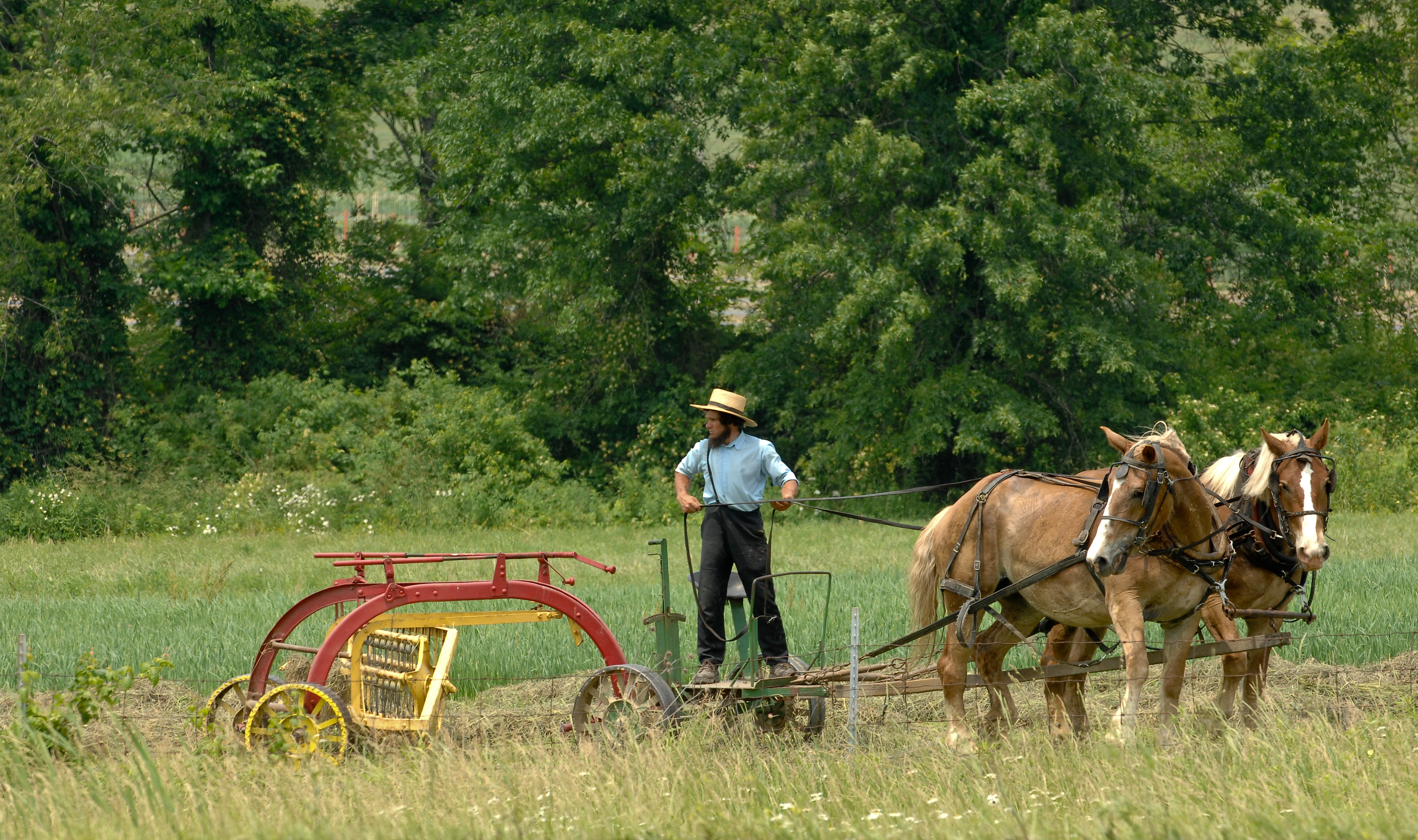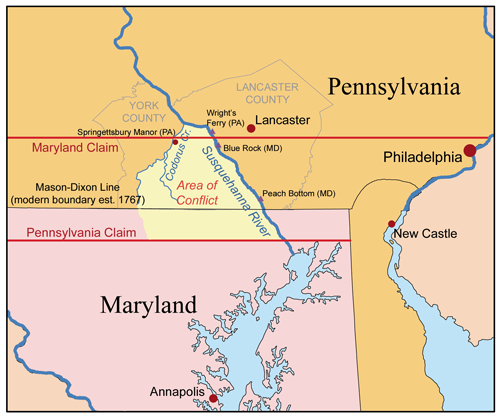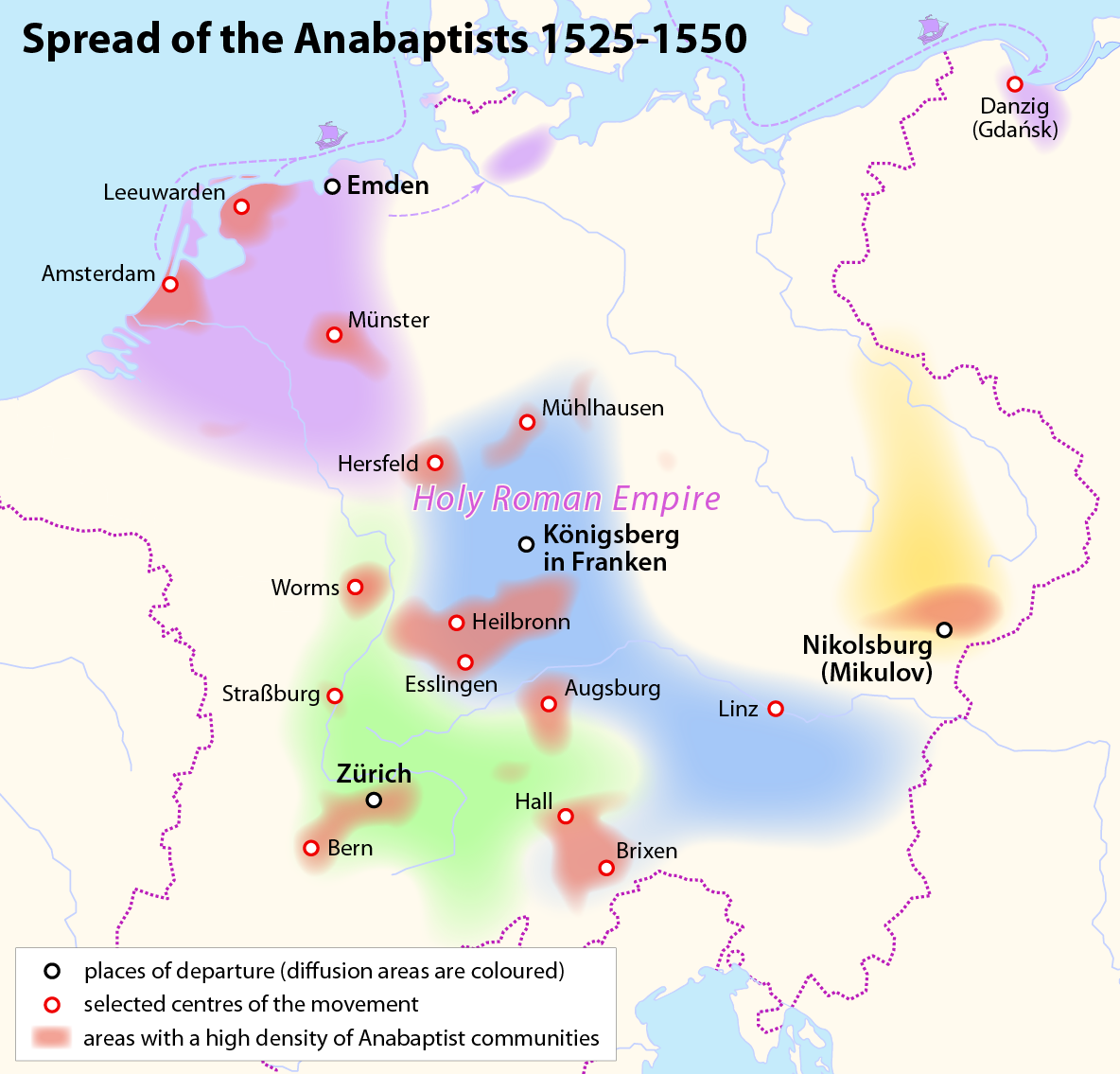|
Renno Amish
The Renno Amish, also called Beachy Amish or "black toppers" are a subgroup of Amish that was formed in 1863 in Mifflin County, Pennsylvania. They are the moderately conservative Old Order Amish group in Kishacoquillas Valley, locally called Big Valley, but still relatively conservative compared with the Amish of other regions. History Amish settled in Mifflin County as early as 1791, coming from Lancaster County, Pennsylvania. In the 1840s there were three Amish congregations in the region. In 1849 one district divided from the two others, forming the Byler Amish, the first subgroup in North America that divided because of doctrinal differences. The Beachy Amish emerged from a conflict between two bishops of the remaining districts, Abraham Peachey, and Solomon Beiler, in the 1850s. Beiler was one of several Amish Bishops at that time that had begun to baptize his congregation in streams rather than homes, a practice that did not sit well with Peachey, who preferred the tradi ... [...More Info...] [...Related Items...] OR: [Wikipedia] [Google] [Baidu] |
Subgroups Of Amish
Subgroups of Amish developed over the years, as Amish churches have divided many times over doctrinal disputes. The 'Old Order' Amish, a conservative faction that withdrew from fellowship with the wider body of Amish in the 1860s, are those that have most emphasized traditional practices and beliefs. There are many different subgroups of Amish with most belonging, in ascending order of conservatism, to the Beachy Amish, New Order, Old Order, or Swartzentruber Amish groups. Amish affiliations Donald B. Kraybill, Karen M. Johnson-Weiner and Steven M. Nolt speak in their book ''The Amish'' of different Amish ''affiliations''. They define an affiliation as "a cluster of two or more districts with at least twenty years of shared history". They continue: "affiliated congregations share similar Ordnungs, which specify distinctive lifestyles and visible symbols that set them apart from other affiliations". When referring to affiliations, Amish themselves speak of "our people" (''unser ... [...More Info...] [...Related Items...] OR: [Wikipedia] [Google] [Baidu] |
Mifflin County, Pennsylvania
Mifflin County is a county in the Commonwealth of Pennsylvania. As of the 2020 census, the population was 46,143. Its county seat is Lewistown. The county was created on September 19, 1789, from parts of Cumberland County and Northumberland County. It was named for Thomas Mifflin, the first Governor of Pennsylvania. Mifflin County comprises the Lewistown, PA Micropolitan Statistical Area. Geography The county terrain is formed by the folded Appalachian Mountain ridges which run from southwest to northeast across the county. The terrain slopes to the northeast, with its highest point (Broad Mtn) 1.25 mile (2 km) East Northeast from the county's Northwest corner, just south of the county's border with Centre County. It measures 2,339' (713m) Above sea level. The Juniata River flows northeast through the lower part of the county, exiting northeastward into Juniata County near Hawstone. The county has a total area of , of which is land and (0.9%) is water. Mifflin Cou ... [...More Info...] [...Related Items...] OR: [Wikipedia] [Google] [Baidu] |
Kishacoquillas Valley
The Kishacoquillas Valley, known locally as both Kish Valley and Big Valley, is an enclosed anticlinal valley in the Ridge-and-valley Appalachians of Central Pennsylvania, and is located in Mifflin and Huntingdon counties. Geography The valley lies between Stone Mountain ridge to the north and Jacks Mountain ridge to the south. It drains via the Kishacoquillas Creek through the Mann Narrows water gap in Jacks Mountain to the Juniata River. U.S. Route 322 follows the creek through the gap, and is the main travel route across the valley, running east and west between Harrisburg and State College. The Mifflin County Airport is located in the valley. Amish and Mennonites The Amish settlement in the Kishacoquillas Valley was founded in 1791. It is the third-oldest Amish settlement still in existence. In 2013 there were 26 Amish church districts, indicating an estimated Amish population of more than 3,000 people. Twelve Amish and Mennonite groups live in the valley, "one of th ... [...More Info...] [...Related Items...] OR: [Wikipedia] [Google] [Baidu] |
Lancaster County, Pennsylvania
Lancaster County (; Pennsylvania Dutch: Lengeschder Kaundi), sometimes nicknamed the Garden Spot of America or Pennsylvania Dutch Country, is a county in the Commonwealth of Pennsylvania. It is located in the south central part of Pennsylvania. As of the 2020 census, the population was 552,984. Its county seat is Lancaster. Lancaster County comprises the Lancaster, Pennsylvania metropolitan statistical area. Lancaster County is a tourist destination with its Amish community a major attraction. Contrary to popular belief, the word "Dutch" in "Pennsylvania Dutch" is not a mistranslation, but rather a corruption of the Pennsylvania German endonym ''Deitsch'', which means "Pennsylvania Dutch / German" or "German". Ultimately, the terms Deitsch, Dutch, Diets, and Deutsch are all cognates of the Proto-Germanic word meaning "popular" or "of the people". The continued use of "Dutch" instead of "German" was strengthened by the Pennsylvania Dutch in the 19th century as a way ... [...More Info...] [...Related Items...] OR: [Wikipedia] [Google] [Baidu] |
Byler Amish
The Byler Amish, also called Alt Gemee (Old Church), are a small conservative subgroup of the Amish. They are known for the yellow color of their buggies, which earned them the nickname "yellow-toppers" and for wearing only one suspender. They are the oldest Old Order Amish affiliation that separated for doctrinal and not for geographical reasons. History Amish settled in the Mifflin County region of Pennsylvania as early as 1791, coming from Lancaster County, Pennsylvania. In the 1840s there were three Amish congregations in the region. In 1849 Samuel B. King, a conservative bishop who warned against adopting the use of rubber tires on buggies and who was also accused of giving sermons that were too long, was "silenced", that is he was removed from his ministerial duties. One of the three districts, the "lower" district sided with King and split from the other two districts. This split was actually the culmination of mounting tensions over several issues and led to more cons ... [...More Info...] [...Related Items...] OR: [Wikipedia] [Google] [Baidu] |
Amish Mennonite
Amish Mennonites came into existence through reform movements among North American Amish mainly between 1862 and 1878. These Amish moved away from the old Amish traditions and drew near to the Mennonites, becoming Mennonites of Amish origin. Over the decades, most Amish Mennonites groups removed the word "Amish" from the name of their congregations or merged with Mennonite groups. In the latest decades the term "Amish Mennonite" is sometimes erroneously used to designate horse-and-buggy Old Order Mennonites, whose lifestyle is more or less similar to the Old Order Amish. Sometimes the term "Amish Mennonite" is used to designate all groups of Amish, both the Old Order Amish and the Amish Mennonites and also the Amish before this division in the second half of the 19th century. The Global Anabaptist Mennonite Encyclopedia Online uses the term "Amish Mennonite" in this sense. History Division 1850–1878 Most Amish communities that were established in North America did not ultim ... [...More Info...] [...Related Items...] OR: [Wikipedia] [Google] [Baidu] |
Mennonites
Mennonites are groups of Anabaptist Christian church communities of denominations. The name is derived from the founder of the movement, Menno Simons (1496–1561) of Friesland. Through his writings about Reformed Christianity during the Radical Reformation, Simons articulated and formalized the teachings of earlier Swiss founders, with the early teachings of the Mennonites founded on the belief in both the mission and ministry of Jesus, which the original Anabaptist followers held with great conviction, despite persecution by various Roman Catholic and Mainline Protestant states. Formal Mennonite beliefs were codified in the Dordrecht Confession of Faith in 1632, which affirmed "the baptism of believers only, the washing of the feet as a symbol of servanthood, church discipline, the shunning of the excommunicated, the non-swearing of oaths, marriage within the same church, strict pacifistic physical nonresistance, anti-Catholicism and in general, more emphasis on "true ... [...More Info...] [...Related Items...] OR: [Wikipedia] [Google] [Baidu] |
Ordnung
The Ordnung is a set of rules for Amish, Old Order Mennonite and Conservative Mennonite living. '' Ordnung'' () is the German word for order, discipline, rule, arrangement, organization, or system. Because the Amish have no central church government, each assembly is autonomous and is its own governing authority. Thus, every local church maintains an individual set of rules, adhering to its own Ordnung, which may vary from district to district as each community administers its own guidelines. These rules are largely unwritten, yet they define the very essence of Amish identity. Conservative Mennonites refer to Ordnung by the English terms "discipline" or "standard" and are usually written. Purpose Anabaptists, such as the Amish, believe in a literal interpretation of the Bible. Thus the Ordnung is intended to ensure that church members live according to the biblical Word of God. The Ordnung is a set of behavioral rules, and all members within a church agree to have their li ... [...More Info...] [...Related Items...] OR: [Wikipedia] [Google] [Baidu] |
Horse And Buggy
] A horse and buggy (in American English) or horse and carriage (in British English and American English) refers to a light, simple, two-person carriage of the late 18th, 19th and early 20th centuries, drawn usually by one or sometimes by two horses. Also called a roadster or a trap, it was made with two wheels in England and the United States (also made with four wheels). It had a folding or falling top. History A Concorde buggy, first made in Concord, New Hampshire, had a body with low sides and side-spring suspension. A buggy having two seats was called a double buggy. A buggy called a stanhope typically had a high seat and closed back. The bodies of buggies were sometimes suspended on a pair of longitudinal elastic wooden bars called ''sidebars''. A buggy whip had a small, usually tasseled tip called a ''snapper''. In countries such as the United States, the United Kingdom, and Canada, it was a primary mode of short-distance personal transportation, especially between ... [...More Info...] [...Related Items...] OR: [Wikipedia] [Google] [Baidu] |
Nebraska Amish
The Nebraska Amish, also called Old Schoolers, are a relatively small affiliation of the Amish. They are the most conservative subgroup of Amish, indicated not only by their use of technology but also by their particular style of dress. They emerged in 1881 as a conservative split from the Byler Amish, who themselves emerged as the first conservative splinter group from the Amish mainstream in 1849. History Amish settled in the Mifflin County region of Pennsylvania – the Kishacoquillas Valley – as early as 1791, coming from Lancaster County, Pennsylvania. In the 1840s there were three Amish congregations in the region with a membership of 290. In 1849 Samuel B. King, a conservative bishop who warned against adopting the use of rubber tires on buggies and who was also accused of giving sermons that were too long, was "silenced", that is he was removed from his ministerial duties. One of the three districts, the "lower" district sided with King and split from the other two d ... [...More Info...] [...Related Items...] OR: [Wikipedia] [Google] [Baidu] |
Pennsylvania
Pennsylvania (; (Pennsylvania Dutch: )), officially the Commonwealth of Pennsylvania, is a state spanning the Mid-Atlantic, Northeastern, Appalachian, and Great Lakes regions of the United States. It borders Delaware to its southeast, Maryland to its south, West Virginia to its southwest, Ohio to its west, Lake Erie and the Canadian province of Ontario to its northwest, New York to its north, and the Delaware River and New Jersey to its east. Pennsylvania is the List of U.S. states and territories by population, fifth-most populous state in the nation with over 13 million residents 2020 United States census, as of 2020. It is the List of U.S. states and territories by area, 33rd-largest state by area and ranks List of states and territories of the United States by population density, ninth among all states in population density. The southeastern Delaware Valley metropolitan area comprises and surrounds Philadelphia, the state's List of cities in Pennsylvania, largest ... [...More Info...] [...Related Items...] OR: [Wikipedia] [Google] [Baidu] |




